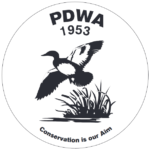Preston and District Wildfowlers Association

Preston and District Wildfowlers Association
“Conservation is Our Aim”

History
Wildfowling on the marshes of the Ribble Estuary has a history going back hundreds of years. Originally, wildfowl were looked upon by local people as a valuable source of food which was hunted for the table or for sale commercially. During the course of the 19th century, wildfowling became a more common pastime but was still principally for the local community.
Recognising that their way of life was under threat from loss of wildfowl habitat, pollution and the closure of marshes to local people, a far-sighted group of wildfowlers under the leadership of Stanley Duncan, a railway engineer from Hull, formed the Wildfowlers Association of Great Britain and Ireland (WAGBI). The association grew slowly at first, but soon started promoting the formation of wildfowling clubs around the UK.
Local wildfowlers were becoming increasingly concerned that the wildfowling they had enjoyed for years was under threat from loss of habitat, increased legislation and lack of control. Under the leadership of our founder member, Ted Conroy, Preston and District Wildfowlers Association (PDWA) was formed. The shooting rights were rented from Preston Borough Council and the local landowners, the Hesketh family. The club headquarters were at the Dolphin Inn ‘Flying Fish’ on Marsh Lane in Longton close to the marsh.
Even at this early stage the club recognised the need for conservation and designated large non-shooting sanctuary areas and decreed that a proportion of membership fees to be allocated to conservation.
PDWA was affiliated to WAGBI since its formation.
The Ribble Estuary was designated as Site of Special Scientific Interest (SSSI) in 1976 . Its SSSI Designation was due to it being the largest area of green grazed salt marsh in the UK and its importance to overwintering wildfowl and waders.
WAGBI changed its name to the British Association for Shooting and Conservation. PDWA continued affiliation to BASC.
The Ribble Estuary Special Protection Area (SPA) was designated. PDWA commenced monthly co-ordinated bird counts for British Trust for Ornithology (BTO), which became the Wetland Bird Survey (WeBS) Core Count in 1993.
PDWA agreed a “Consent” with the Nature Conservancy Council for our wildfowling and conservation activities. This consent still stands and is now approved by Natural England.
Preston Borough Council put the marshes and shooting rights up for sale. PDWA bought the sporting rights and agreed a 99-year lease with the Hesketh family for the parts of the marsh that they owned and for the sanctuary areas.
The Ribble Estuary SPA was expanded to become the Ribble & Alt Estuaries SPA in 1995. It also received its Ramsar site designation the same year on account of its internationally important waterbird populations. PDWA Junior Membership Section formed
Conservation work in sanctuary – deepening of flashes, provision of duck nest boxes and fencing to provide proofing from predators. Maintenance of flashes on the marsh and creation of new flashes to replace those lost.
First introduction to wildfowling day held for BASC Young Shots (repeated in 2013, 2016 and again in 2023)
Introduction to wildfowling day for BASC Ladies held – also attended by Lancashire Constabulary Wildlife Officer and Head of Tactical Operations
Joint hosting of Natural England Wildfowling Experience Day – presentations, discussions and marsh visit
PDWA agreed to partake in Project Penelope – International Duck Ringing Project with great success cannon netting and ringing widgeon and shelduck in conjunction with WWT, BASC, Waterfowlers Network
Continued involvement in Project Penelope, Hutton Marsh Conservation Project, and regular meetings/involvement with other stakeholders, including Hesketh Farms Ltd, NE, WWT, BASC